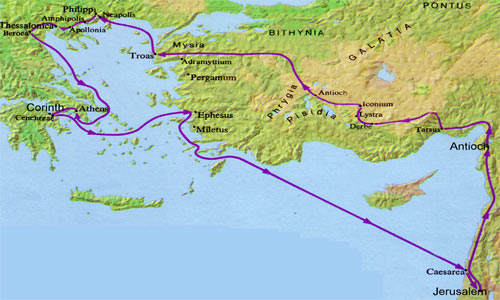When I announced the details of our January 2009 evangelism trip to Costa Rica on this website 12 days ago, I never dreamed that I would so quickly be facing the question: is it too late to sign up? But that is exactly the situation we are facing.
We now have 25 people registered on our team. We have made the airline reservations for those 25 — and the plane on which we will be traveling is booked solid. We have negotiated rooms at a hotel in downtown San José and have reserved a 28-passenger bus to transport our group during the week we are in Costa Rica. All the details of our trip can be found here: CR4C 2009 Trip Prospectus: Version 2.
So is it too late for other people to join our team? Let me put it this way — if you want to be part of this adventure, I need to hear from you very soon. I have started a waiting list. I have one name on the list so far, and I received an inquiry from three more last night. Do you want to go? If so, I need to hear from you in a hurry.
We want to take as many people as would like to go. We could use more handy builders to help with our construction project. Those last three inquiries were from medical personnel; if they come along, it will double our capacity at the health clinics and increase our need for non-medical personnel to assist them. If we can arrange it, I would love to have as many as 10 or 15 more team members.
However, adding more people also presents some challenges. We will have to book seats on another flight and see if we can find a similar good rate, ask the hotel to set aside more rooms for us (Costa Rica is a popular vacation destination in January, which is their summer), and reserve a second van or bus for the week.
Before I begin that process, I want to know how many more people we are talking about. So, if you have been thinking about coming, it’s time to make a decision. If you are on the team and have a friend or family member you want to bring along, it’s time to make a decision about that. Yes, I believe we can include some more people on this evangelism adventure … but it begins by you telling us that you really want to go — as soon as possible.
Here is some information about our trip, our 25 team members, and what is in store for us in Costa Rica:
* We will be traveling Jan. 19-Jan. 26. Flight schedules forced us to move our departure up a day, but the team responded with excitement to get to spend an extra day on the field.
* Our team members live in seven different cities in Oklahoma and Missouri: Broken Arrow, Cashion, Edmond, Guthrie, Lawton, Midwest City and Carl’s Junction, Mo.
* They attend eight different churches, including Canton Christian Church, Christian Church of Carl’s Junction (Mo.), Edmond Christian Church, Harvest Christian Church (Lawton), Jones Christian Church, Life Church (Edmond), and churches in Midwest City and Broken Arrow.
* They range in age from the 20s to the 60s.
* We will build a dormitory for a Bible Institute by creating a second story over the kitchen of Iglesia del Evangelio (Church of the Gospel) in San José. We have about eight talented builders on our construction team. We could use a few more.
* We will conduct three days of health clinics at or near three Costa Rican churches. We have two registered nurses on our team, plus at least one Costa Rican doctor who will be providing health care. We will offer a clinic at Patio de Agua, where Costa Rica For Christ started a new church earlier this year. We will also offer a clinic in a community where CR4C hopes to start a new church soon.
* We will facilitate a three-day convention of Costa Rican churches on Jan. 23-25. Terry Hull, director of Joshua One Ministries, will be speaking at the convention, with Ralph Shead of Literature & Teaching Ministries translating.
It’s going to be a great trip. If you want to come, please let me know right away. And if you can’t join us, how about helping us financially. Our dormitory project will cost $7,000-$10,000. The cost of medicines and supplies for the health clinics will continue to escalate as the size of our team grows.
The money being paid by team members will not cover all of our expenses — we are depending upon donations from generous Christians to cover the rest. We have always undertaken projects such as this not knowing where the money was going to come from, but putting our faith in the Lord and His people. If you are willing to help, please send a check to this address.

